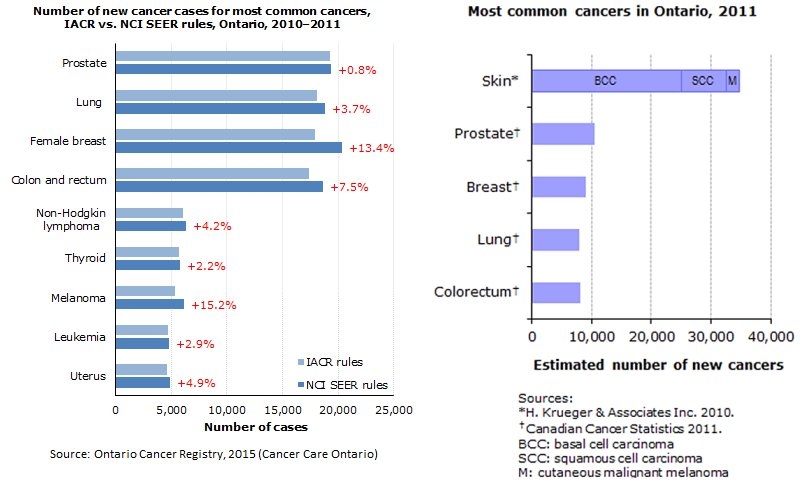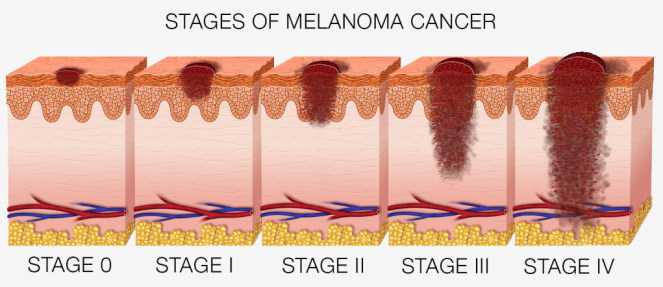Torontonians have been basking in the sunshine and enjoying warm temperatures and bright clear skies recently. This week is National Sun Awareness Week and while the Sun can act as a tonic and stimulate people's inherent love of the outdoors, it can also be toxic especially for our skin. Ultraviolet rays from the sun are responsible for causing
Melanoma, a deadly form of skin cancer affecting the largest organ of our body.
In Ontario, the prevalence of Melanoma has risen dramatically over the last decade. It is one of the fastest growing cancers and the second most common cancer in young adults aged 15 to 34 according to
Cancer Care Ontario. Skin cancer accounts for one-third of all cancers in Ontario. Scientists fear that the depletion of the ozone layer will increase cases of skin cancer, especially in polar countries where the UV radiation is very high.
Causes: Skin cancers are caused by overexposure to ultraviolet (UV) radiation from the sun or indirect sources like tanning equipment. UV rays are carcinogenic and prolonged exposure results in penetration into the deeper layers of the skin. This releases melanin, the pigment that gives our skin it’s color. An excess of melanin is responsible for the appearance of freckles, sunspots and irregular moles. In certain cases, a normal looking mole could transform into a cancerous lesion. Heredity and immunosuppression are other factors that have contributed to the rise of melanoma.
 You have a high lifetime risk of developing Melanoma if you have
You have a high lifetime risk of developing Melanoma if you have:
- A family or personal history of malignant melanoma or any form of skin cancer
- Fair skin, light eyes and hair, you sunburn easily or tan with difficulty
- Unfamiliar moles that are irregular in shape and multi-colored
- Large brown moles at birth
- Frequent or prolonged outdoor exposure in sunny weather
Warning signs: If you see dark spots that are black or multi-colored which are growing or changing in size and color, talk to your doctor. The five things or the ABCDE about spots that you need to watch for are asymmetry, border, color, diameter and evolution (change in appearance). Frequent use of tanning equipment is also responsible for the increase in melanoma and skin cancers among youth.

Treatment Options in Toronto
Talk to your Family Physician and discuss different treatment options. Advances in technology, non-invasive imaging, gene and immunotherapy have changed the medical management of cancers. Early diagnosis and treatment increase your chances of recovery. Breakthrough drugs like
Keytruda and
Yervotym (both work by boosting the natural immunity) are recommended as the first line of treatment for patients with metastatic melanomas. Some options for people looking for treatment in Toronto.
This clinic offers comprehensive care for diagnosis and treatment of Melanoma. Periodic monitoring of spots on the skin and counselling for treatment and prevention of skin cancer is also available. They are located at 4256 Bathurst Street, Toronto.
They have a dedicated team of Oncologists and are known for developing new line of treatments and successful clinical trials. They also have a special melanoma and skin cancer clinic. You can learn more by visiting their website or their location in downtown, Toronto.
They are a support group spreading skin cancer awareness who also arrange
teleconferences for patients on the fourth or last Wednesday every month for free. A guest speaker discusses specific topics related to melanoma with the participants. Patients are encouraged to share their questions, and concerns. For registering visit their website or call 905-901-5121 ext. 103.
This clinic have a panel of oncologists who come up with a timely and specific treatment plan based on your diagnosis. It also has a Rapid Melanoma Diagnostic Unit for early diagnosis and intervention. Call 416-480-5000 for more details. Their location is 2075 Bayview Avenue, Toronto.
Precautions: According to Environment Canada, UV radiation values are three to four per cent higher during summer. In Ontario, UV radiation is most intense and damaging between May and August, so avoid over exposure to sun during these months. Plan for outdoor activities before 11 a.m. or after 4 p.m. and check the UV index if you plan to be outdoors for long. Anything between 3-5 is considered safe. Wear a hat. Use a waterproof sunscreen with SPF 30 before you step out and carry UV protective sunglasses at all times. Avoid or minimize the usage of tanning equipment.
Save your skin - Be sun smart.

 You have a high lifetime risk of developing Melanoma if you have:
You have a high lifetime risk of developing Melanoma if you have:
